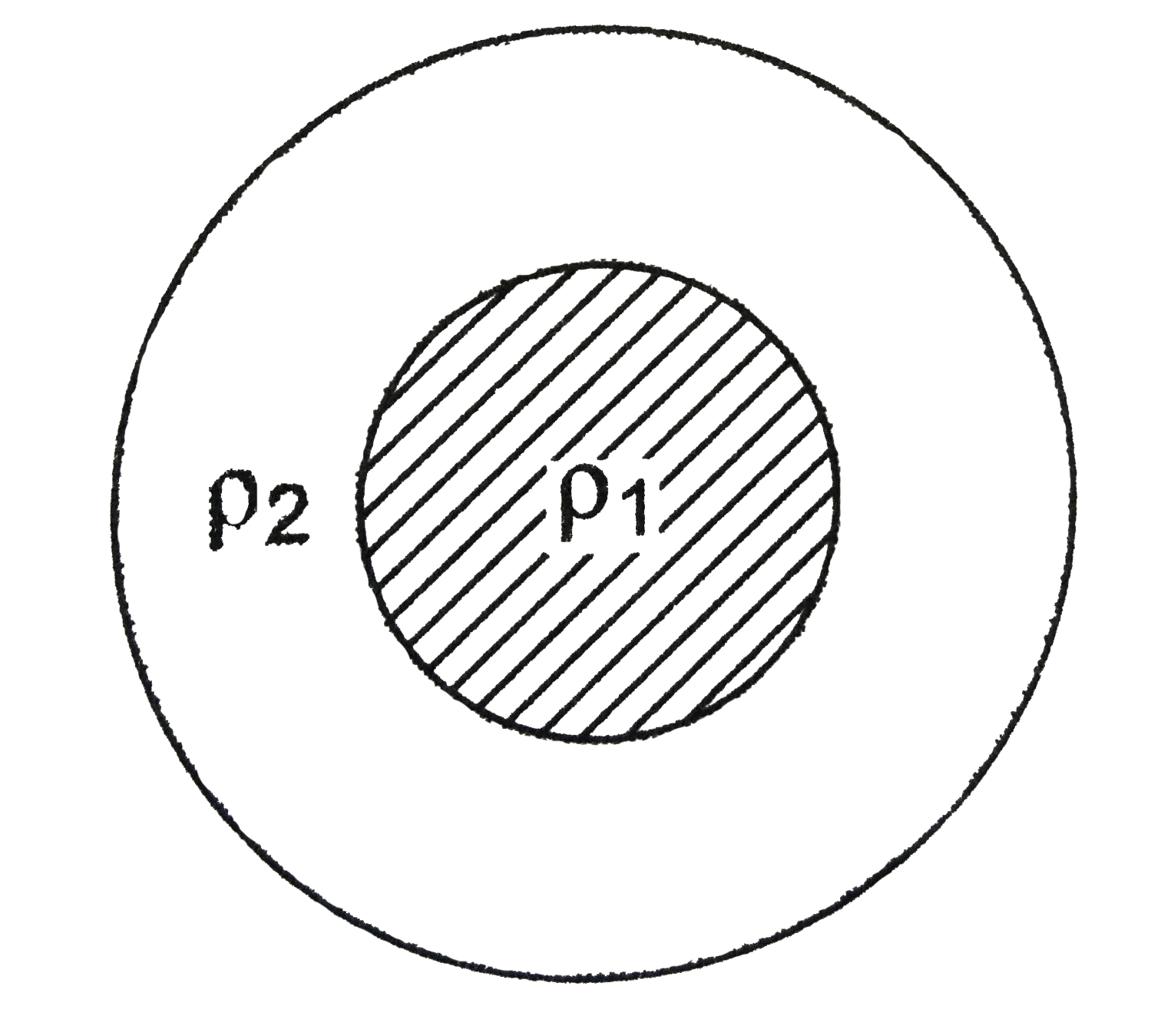The acceleration due to gravity near the surface of a planet of radius R and density d is proportional to
ρR
ρR−1
ρ−1R−2
ρR2
The correct Answer is:A
To solve the problem of determining how the acceleration due to gravity (g) near the surface of a planet is proportional to its radius (R) and density (d), we can follow these steps:
1. Understand the formula for acceleration due to gravity (g):
The acceleration due to gravity at the surface of a planet is given by the formula:
g=G⋅MR2
where G is the universal gravitational constant, M is the mass of the planet, and R is the radius of the planet.
2. Express mass (M) in terms of density (d):
The mass of the planet can be expressed using its density and volume. The volume V of a sphere (the shape of the planet) is given by:
V=43πR3
Therefore, the mass M can be expressed as:
M=d⋅V=d⋅43πR3
3. Substitute the expression for mass (M) into the formula for g:
Now, substitute the expression for M into the formula for g:
g=G⋅(d⋅43πR3)R2
4. Simplify the equation:
Simplifying the equation gives:
g=G⋅4πd3⋅R3R2
This simplifies to:
g=G⋅4πd3⋅R
5. Identify the proportional relationship:
From the simplified equation, we can see that:
g∝R⋅d
This means that the acceleration due to gravity is directly proportional to both the radius R and the density d of the planet.
Conclusion:
Thus, the acceleration due to gravity near the surface of a planet of radius R and density d is proportional to R⋅d.
The acceleration due to gravity at the surface of a planet is given by the formula:
g=G⋅MR2
where G is the universal gravitational constant, M is the mass of the planet, and R is the radius of the planet.
The mass of the planet can be expressed using its density and volume. The volume V of a sphere (the shape of the planet) is given by:
V=43πR3
Therefore, the mass M can be expressed as:
M=d⋅V=d⋅43πR3
Now, substitute the expression for M into the formula for g:
g=G⋅(d⋅43πR3)R2
Simplifying the equation gives:
g=G⋅4πd3⋅R3R2
This simplifies to:
g=G⋅4πd3⋅R
From the simplified equation, we can see that:
g∝R⋅d
This means that the acceleration due to gravity is directly proportional to both the radius R and the density d of the planet.
Thus, the acceleration due to gravity near the surface of a planet of radius R and density d is proportional to R⋅d.
Topper's Solved these Questions
- BOOK - VMC MODULES ENGLISHCHAPTER - JEE MAIN - 5EXERCISE - PART I : PHYSICS (SECTION - 2)5videos
JEE MAIN - 5
- BOOK - VMC MODULES ENGLISHCHAPTER - INTRODUCTION TO VECTORS & FORCES EXERCISE - JEE Advanced ( ARCHIVE LEVEL-2)12videos
INTRODUCTION TO VECTORS & FORCES
- BOOK - VMC MODULES ENGLISHCHAPTER - JEE MAIN REVISION TEST - 30 | JEE -2020EXERCISE - PHYSICS25videos
JEE MAIN REVISION TEST - 30 | JEE -2020
Similar Questions
The value of acceleration due to gravity at the surface of earth
View SolutionThe density of the core a planet is ρ1 and that of the outer shell is ρ2. The radii of the core and that of the planet are R and 2R respectively. The acceleration due to gravity at the surface of the planet is same as at a depth R. Find the ratio of ρ1ρ2
 View Solution
View Solution
Knowledge Check
- Question 1 - Select One
The density of the core a planet is ρ1 and that of the outer shell is ρ2. The radii of the core and that of the planet are R and 2R respectively. The acceleration due to gravity at the surface of the planet is same as at a depth R. Find the ratio of ρ1ρ2
 A2.3B4.5C3.2D5.4
A2.3B4.5C3.2D5.4
Acceleration due to gravity at earth's surface is 10m−2 The value of acceleration due to gravity at the surface of a planet of mass 12 th and radius 12 of f the earth is -
View SolutionThe density of the core a planet is ρ1 and that of the outer shell is ρ2. The radii of the core and that of the planet are R and 2R respectively. The acceleration due to gravity at the surface of the planet is same as at a depth R. Find the radio of ρ1ρ2
 View Solution
View SolutionThe density of the core of a planet is x and that of outer shell is y. The radii of the core and that of the planet are R and 2R. The acceleration due to gravity at the surface of planet is same as at a depth R. The ratio of x and y is n/3. Find the value of n.
View SolutionIf g1 and g2 denote acceleration due to gravity on the surface of the earth and on a planet whose mass and radius is thrice that of earth, then
View SolutionThe acceleration due to gravity on the surface of a planet is one - fourth of the value on Earth. When a brass ball is brought to this planet , its
View SolutionThe density of a newly discovered planet is twice that of earth. The acceleration due to gravity at the surface of the planet is equal to that at the surface of the earth. If the radius of the earth is R, the radius of the planet would be
View SolutionHow is the acceleration due to gravity on the surface of the earth related to its mass and radius ?
View Solution

